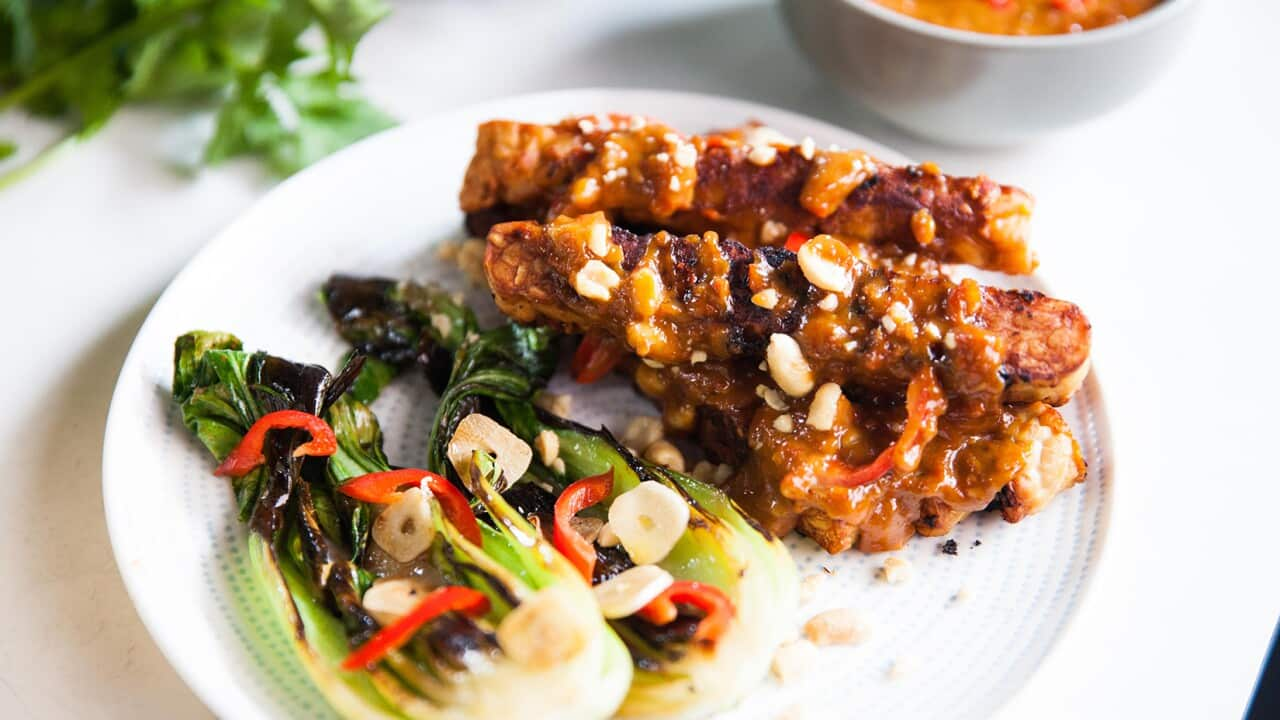Stream free On Demand

Beyond Bali With Lara Lee
series • Travel
G
series • Travel
G
At many eateries in Indonesia, you'll find a fermented soy cake called tempeh (tempe in Indonesia). Whether fried, baked, grilled, sauteed or steamed, this protein-rich ingredient is cubed in curries and sliced in salads. You'll also find it in noodle dishes, mains and side dishes.
Tempeh is gaining favour in Australia, especially due to its health benefits – it's high in protein and fibre, low in fat and rich in vitamins including calcium and zinc.
Tempeh vs tofu: Tempeh is made from fermented whole soybeans with a firm, nutty texture. Tofu is made from soy milk curds and has a softer, more neutral taste. Is tempeh healthier than tofu? Both are nutritious, but tempeh contains more protein, fibre, and vitamins due to the fermentation process. It's also the only plant-based source of vitamin B12.
Chef Lara Lee's tempeh journey
Indonesian-Australian chef, author and host of SBS's Beyond Bali, Lara Lee was raised in Sydney. After studying journalism, a work move took her London, where she still resides – but transitioned into the world of cooking.
By her early 30s, Lee had graduated from culinary school and worked across various Michelin restaurants before opting to cook food that represented her cultural roots.
My love for [tempeh] was immediate – it was nutty, toasty and textured and it had absorbed all the flavours of garlic and ground coriander it had been marinated in.
"We first visited Indonesia as a family when I was about 20 years old; we were too poor to visit before then," she says. "My father ordered tempeh at a restaurant in Kupang, Timor, where he was born. He described it as one of his favourite foods growing up. It was a tempe goreng dish (fried tempeh) of some variety – crispy, golden and very moreish. My love for it was immediate – it was nutty, toasty and textured and it had absorbed all the flavours of garlic and ground coriander it had been marinated in."

Lara Lee in Indonesia, where tempeh or tempe is a key ingredient. Source: Supplied
Tempeh's origin story
Tempeh is considered to originate in the Indonesian island of Java, when, many centuries ago the discarded residue of soybeans interacted with microbial spores in the air to naturally ferment into an edible, tasty protein.
Today, tempeh is made in homes across Indonesia, which inevitably results in differences of texture and flavour resulting from variations in soil, the type and quality of soybeans, the leaves used to wrap the tempeh (typically banana leaves, but not always) and the final cooking method.
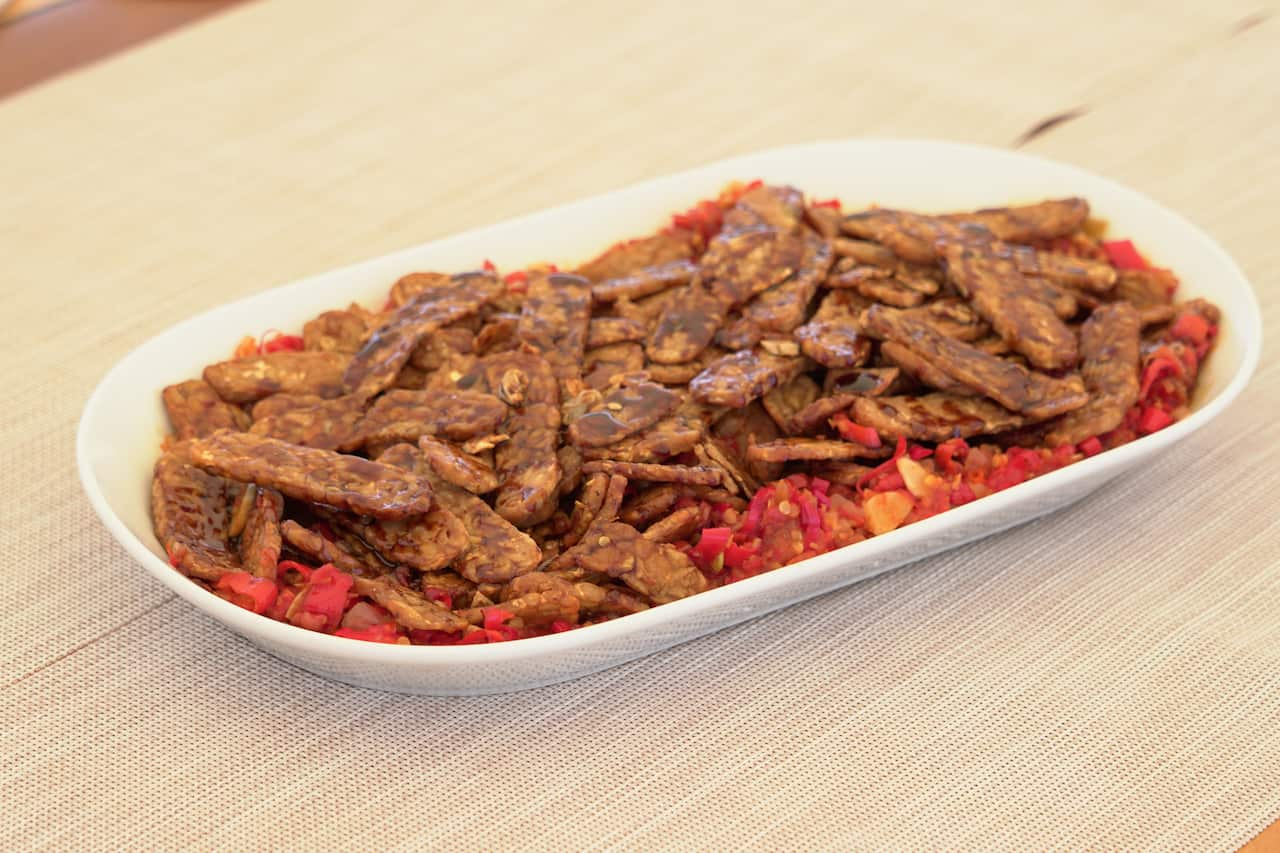
Source: Beyond Bali with Lara Lee
Types of tempeh
Tempeh made from soybeans is the most traditional type, but it is also made using mung beans, red beans, black beans and broad beans. The fermentation process is the same, regardless of which bean, but the time it takes to ferment each differs.
It tastes creamy, with a bright, mushroomy flavour... I love the lively flavour of fresh tempeh.
Tempeh may also be fresh or pasteurised: "Fresh tempeh is white in colour, with a shelf life of three to five days and the kind you will find in Indonesia. It tastes creamy, with a bright, mushroomy flavour," says Lee.
"I love the lively flavour of fresh tempeh, so if you live nearby an artisan producer, it is worth seeking out."
Pasteurised tempeh is usually tan in colour with a longer shelf life and has a subtler flavour.
Fresh tempeh lasts 3-5 days refrigerated. Pasteurised tempeh can last 7-10 days unopened, or several months frozen.
A planet-friendly appeal
Not only is tempeh delicious, nutritious and increasingly easy to find in Australian supermarkets and delis, it's also good for the planet.
Compared to beef, tempeh is four per cent of the price in Indonesia and produces a fifth of total carbon emissions, consuming a tenth of total energy according to the Indonesia Tempe Movement. The movement's one-minute guide to making tempe is worth a watch.
How to add tempeh to your meals
"Tempeh is nutty and toasty in flavour naturally, but it is also porous, so it acts as a wonderful sponge," says Lee.
"The savoury meatiness, umami flavour and texture of tempeh is amplified when it is deep-fried," that it is "wonderfully delicious simply deep-fried or pan-fried in oil and sprinkled with sea salt as a moreish snack."
Try tempeh with chilli garlic wilted greens and coconut milk – where tempeh is fried in coconut oil until crisp and golden.
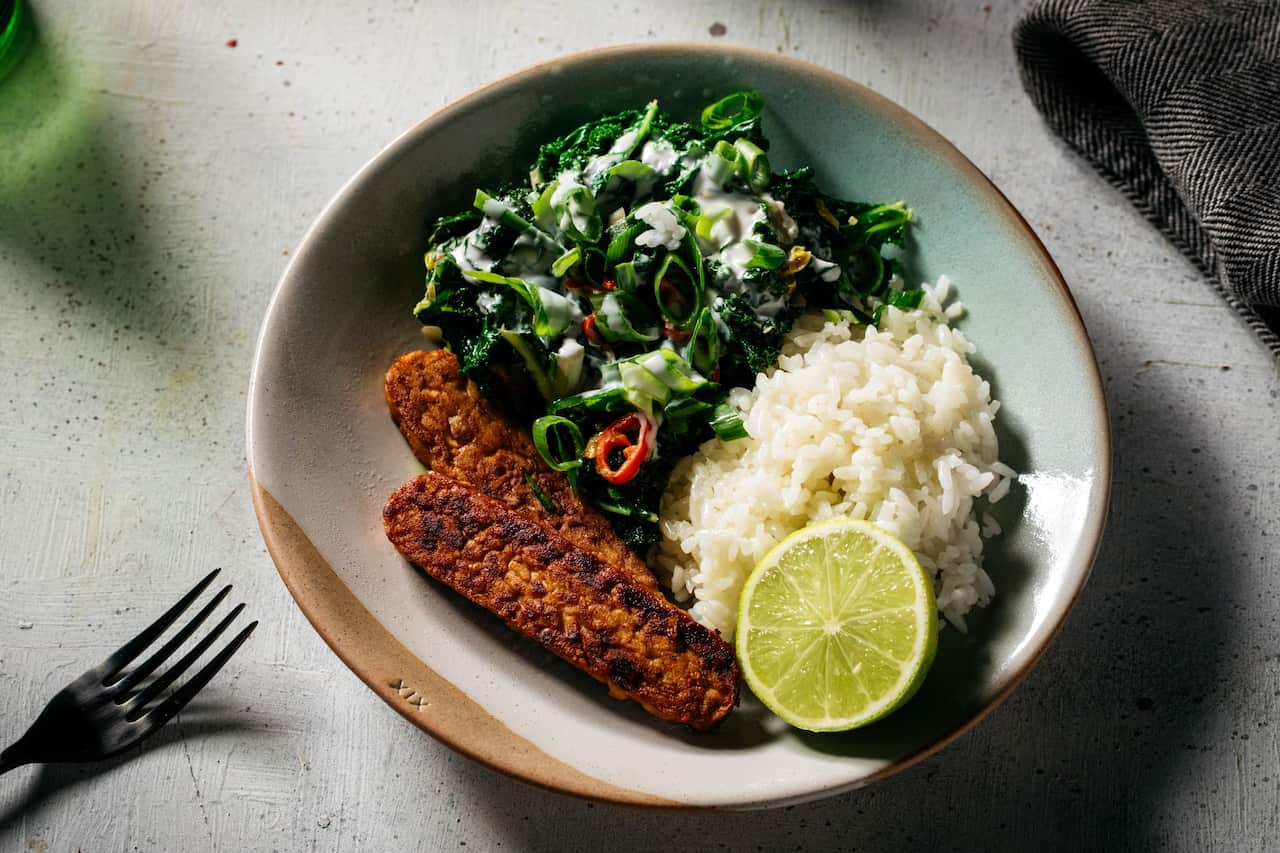
Tempeh with chilli, garlic wilted greens and coconut milk Source: Kitti Gould
If baking, steaming or grilling tempeh, Lee prefers to marinate the tempeh in spices or a simple kecap manis glaze. "When it is simmered in a sauce or broth it absorbs all of the flavours it is cooked in."
For Indonesian tempeh lodeh, tempeh simmered in a coconut milk curry fragrant with aromatics like galangal, tamarind and makrut lime leaves, and packed full of vegetables – eggplant, choko and snakebeans.
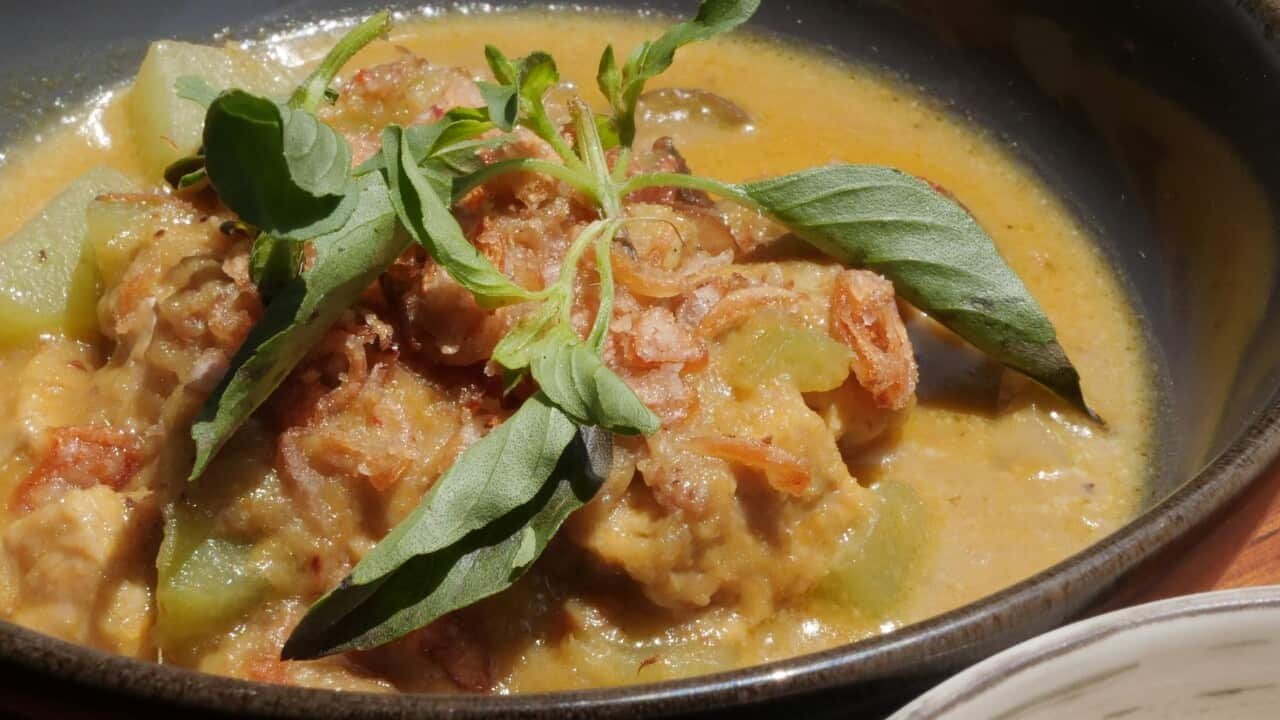
Lee explains that gado-gado is one of Indonesia's national dishes that's found everywhere, from street food stalls to high-end restaurants. It's a vegetable salad served with tempeh and/ or tofu and boiled eggs, tossed together with peanut sauce and served with emping (crunchy crackers made from the melinjo nut).
It's believed that gado-gado has existed since peanuts and chillies were first introduced to Indonesia by Portuguese and Spanish traders in the 16th century, and variations of the dish are enjoyed across Indonesia's 17,500 islands.
"Gado-gado means to mix it up, so this is a brilliant way to enjoy tempeh because, with a few different vegetables, some crunchy crackers and peanut sauce, you can very easily create your own version of gado-gado at home."

You can eat gado-gado on its own, but it's also a great side dish. The peanut sauce will last for up to 5 days, but once tossed, it's best eaten the same day. Source: Louise Hagger
While tempeh has its roots in Indonesian cuisine, its ability to absorb flavours makes it incredibly adaptable to cuisines from around the world. From traditional Indonesian classics to contemporary fusion dishes, tempeh works beautifully across different cooking styles and flavour profiles.
Sweet corn, smoky poblano and cream blend into a sauce that’s vibrant and complex, ladled over seared tempeh. A modern Mexican-inspired dish that complements tempeh's earthiness.
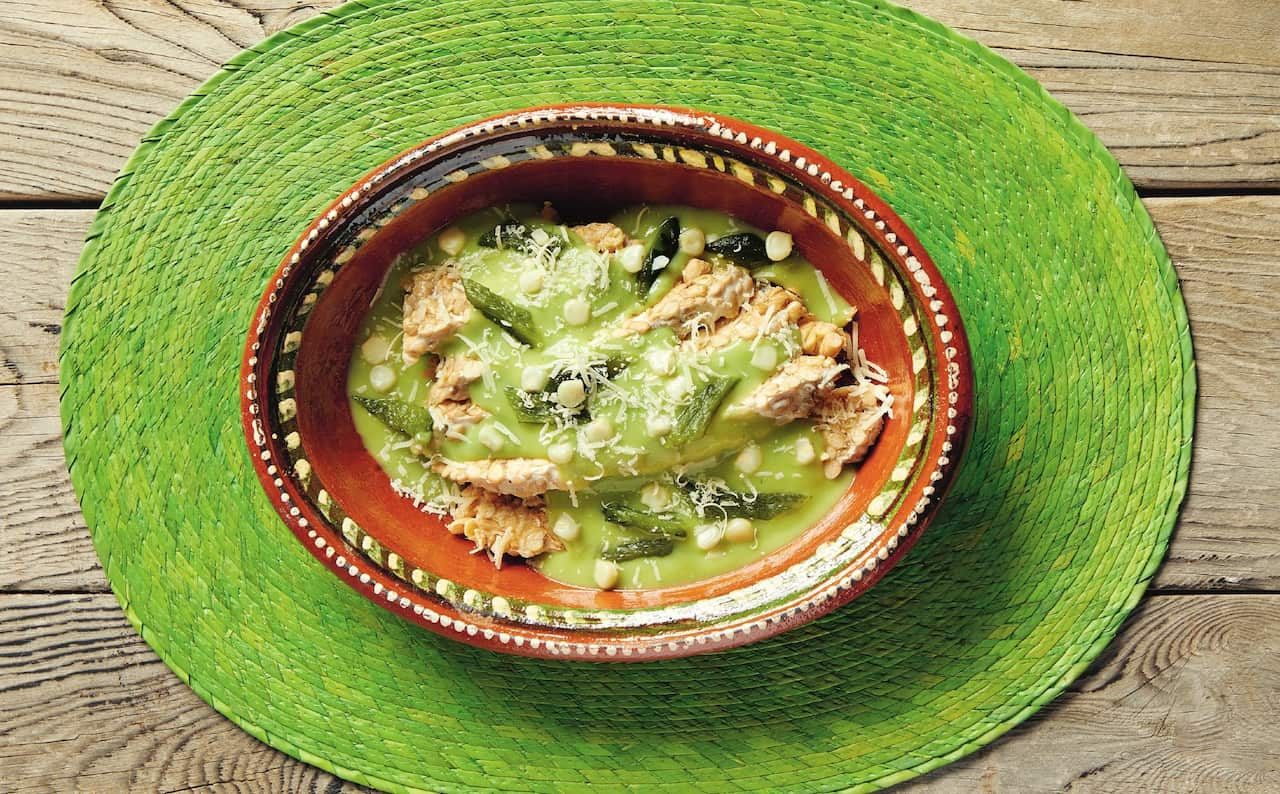
Tempeh or tofu with corn and poblano sauce Source: Ignacio ‘Nacho’ Urquiza
Tempeh stars in this satisfying stir-fry – chewy noodles, crunchy vegetables, marinated tempeh and juicy prawns are brought together with a sweet-savoury sauce. Finished with lime and sprouts, it’s a lively tangle of texture and spice.
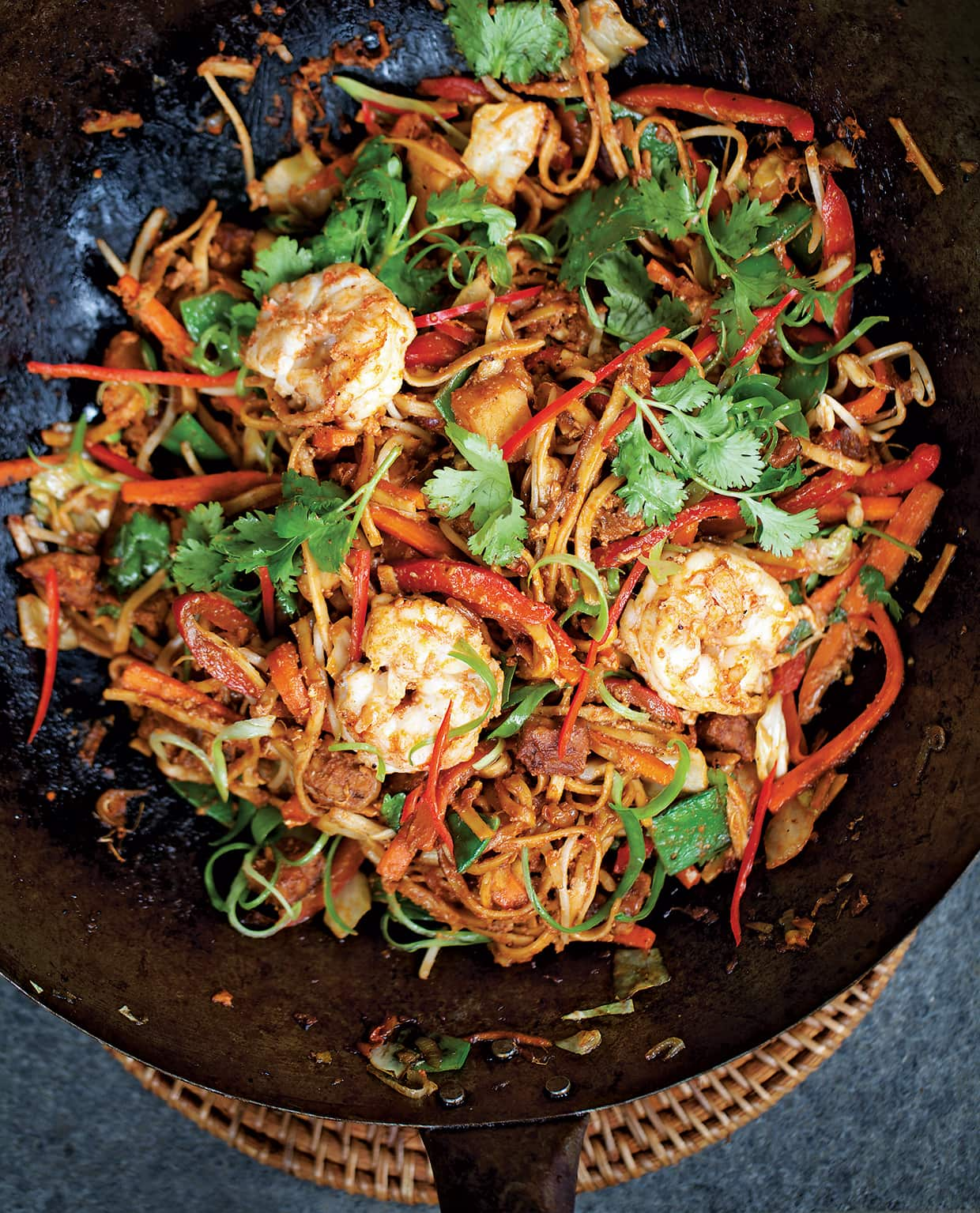
For this fresh, contemporary Australian take on Indonesian flavours, crisp-fried tempeh is coated in a peanut-coconut satay. Zucchini, carrot and daikon keep things fresh and crunchy and herbs bring brightness. A satay quick and light enough for any weeknight.
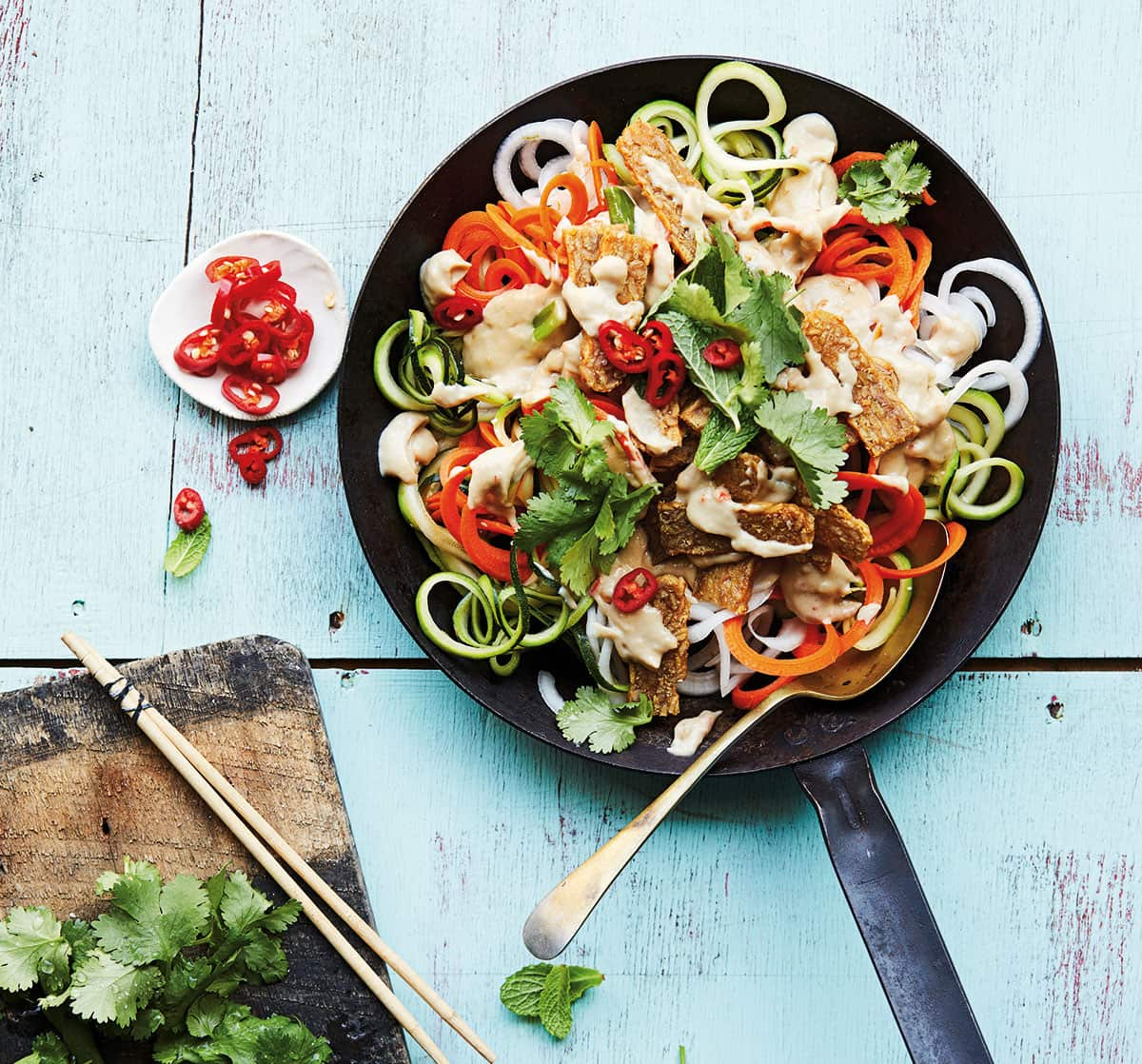
Tempeh satay with lime zoodles Source: Damon Gameau
This dhal layers lentils, turmeric and warm spices into a comforting base, topped with tempeh that’s been frozen, marinated and fried to lock in flavour. The result is a soothing and hearty Indian soup.
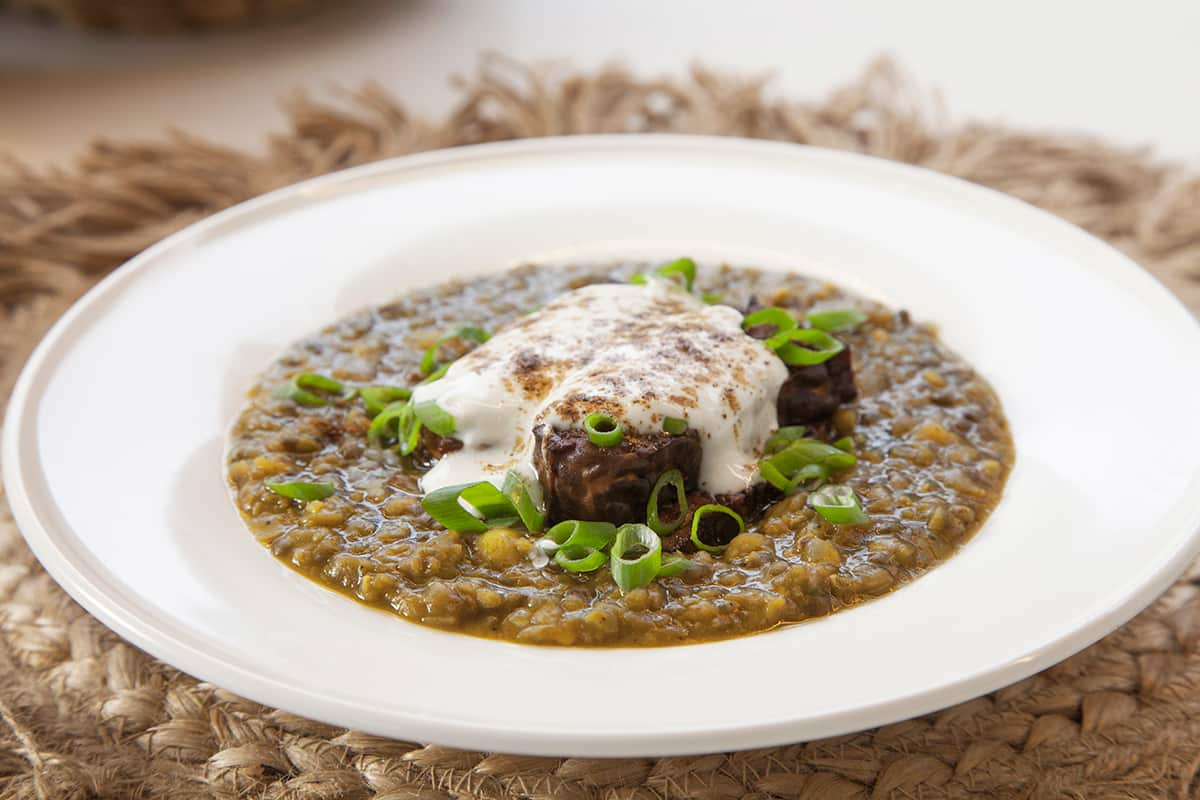
Source: Dan Freene
Whether you're craving authentic Indonesian comfort food or experimenting with international flavour combinations, tempeh's nutty, absorbant base and firm texture make it the perfect canvas for culinary creativity.
Share
SBS Food is a 24/7 foodie channel for all Australians, with a focus on simple, authentic and everyday food inspiration from cultures everywhere. NSW stream only. Read more about SBS Food




